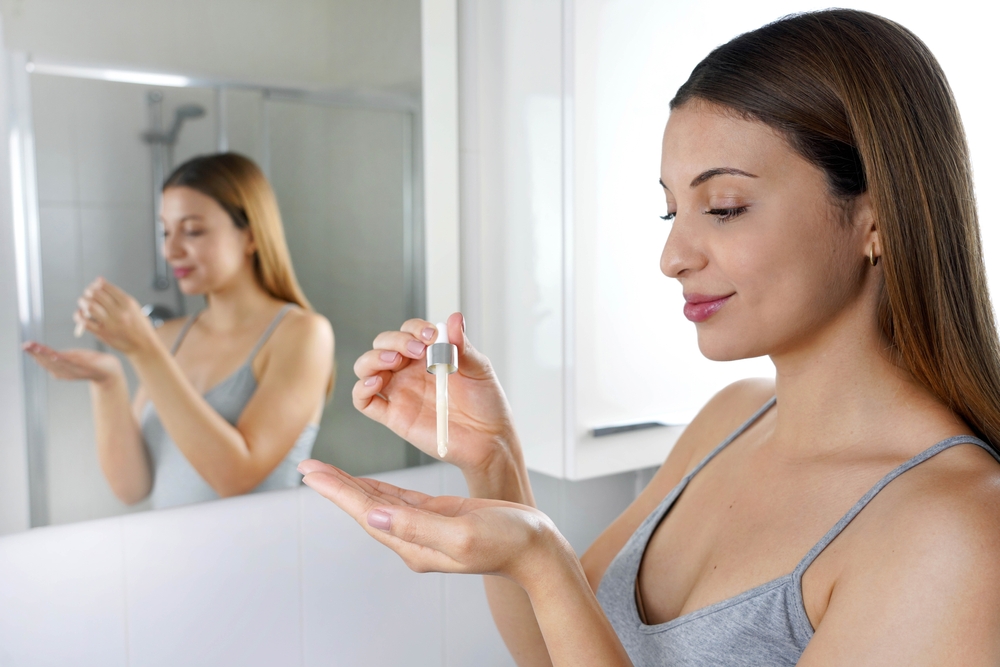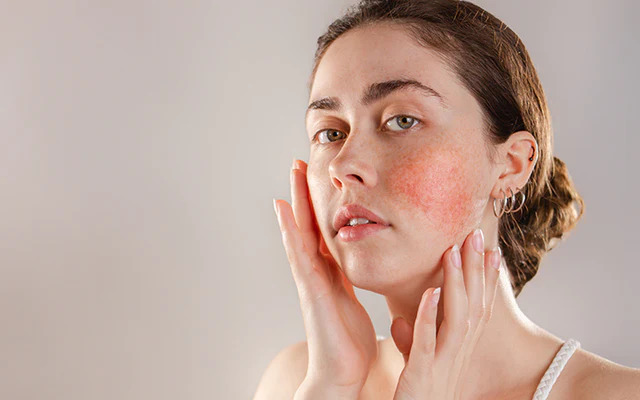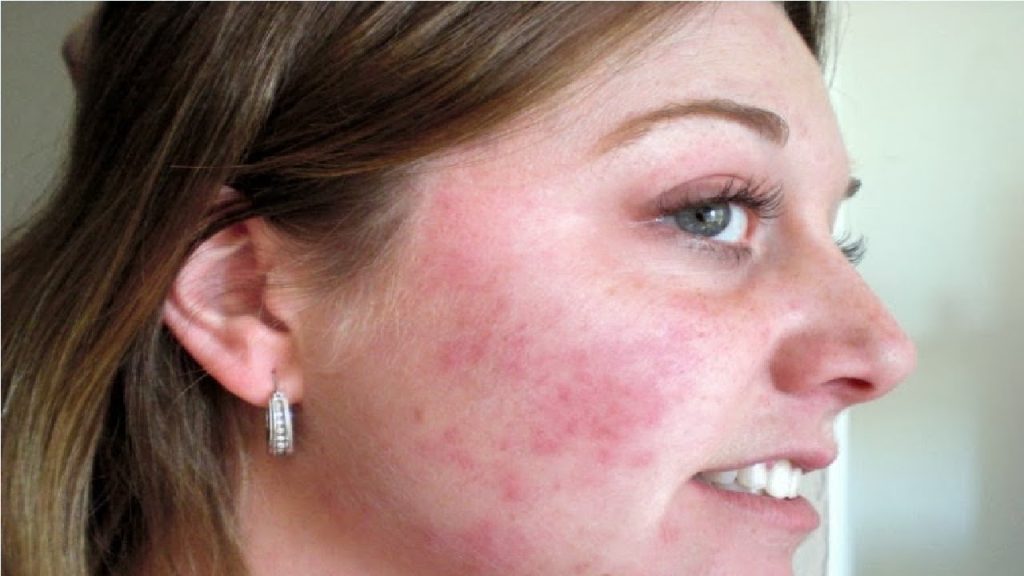Unlock the secrets of radiant skin with niacinamide! Boasting a host of advantages above and beyond essential skincare, this potent substance has rocked the beauty industry. So let’s learn about the benefits of niacinamide and how it helps control sebum production, reduce pore size, and evens out skin tone to give you a complexion that commands attention. Investigating any potential side effects hiding beneath the surface is essential before diving headfirst into this skincare wonder.
From its diverse range of uses to its minimal side effects, niacinamide has become a popular choice for individuals seeking to improve the appearance and well-being of their skin. Discover the benefits of niacinamide and its applications and drawbacks through this article, and know everything about the best skin-improving substance. Head on to embrace the remarkable benefits of niacinamide and unlock healthier, more radiant-looking skin.
What is Niacinamide?

Niacinamide, also known as vitamin B3 or nicotinamide, is a water-soluble vitamin that is needed for the correct functioning of the body. It is a multifunctional vitamin that is essential for many physiological functions. It has become more well-known in the skincare industry due to its many advantages for the skin.
Skincare products with niacinamide can control sebum production, making them useful for people with acne-prone or oily skin. Additionally, it boosts the skin barrier’s function, the skin’s capacity to retain moisture, and the appearance of enlarged pores. Also, It has been niacinamide helps to brighten skin and reduces hyperpigmentation and uneven skin tone.
Additionally, it functions as an antioxidant to shield the skin from oxidative damage and has anti-inflammatory qualities to reduce redness and inflammation. Niacinamide is a helpful element for resolving numerous skin disorders and maintaining general skin health because of its adaptability and gentle nature. It is often found in a variety of skincare products.
Niacinamide is not only for in skin care products but is also use in some medicines. Healthcare professionals can prescribe it to treat certain medical conditions, such as vitamin B3 deficiencies and skin disorders.
How to Use Niacinamide?
Niacinamide is easy to incorporate into your skincare regimen. So look no further if you need help with how to include this extraordinary supplement in your routine. Niacinamide usage is a simple procedure that will produce remarkable skin effects. So scroll through the steps of implementing it efficiently, from picking the best product to effortlessly integrating it into your regimen. Make the most of niacinamide for a glowing, healthy complexion that will leave you feeling confident and beautiful.

Here are some steps to use Niacinamide to get the best benefits:
- Select the appropriate product: Look for skincare products that list niacinamide as an active component in the product description. These could be toners, creams, serums, or moisturizers to get the Benefits Of Niacinamide For Skin. Also, verify the product’s niacinamide concentration because it can differ.
- Apply it to your face by taking a pea-sized dose of the supplement. Use upward strokes to massage or pat the product on your skin gently. Focus on your main concerns or the regions where you desire to experience certain advantages.
- Apply other skincare products after using niacinamide: You can carry on using additional skincare products after using niacinamide. Applying moisturizer, sunscreen, or other serums if they are in your routine. Niacinamide is generally safe to use in conjunction with other skincare compounds. Still, you should avoid using it in the same routine as acidic products like vitamin C or exfoliating acids to get the Benefits Of Niacinamide For Skin.
- Make sure you are consistent with the use in your skincare routine to get the best Benefits Of Niacinamide For Skin. Depending on your preferences and the other products you use, you should either incorporate it in the morning or the evening.
- Be patient: Niacinamide, like the majority of skincare products, may take some time to provide significant results. Use it regularly for a few weeks to get the best result.
- If you have sensitive skin or are new to niacinamide, you can start with a lower dose and gradually increase it. Additionally, decrease the frequency of use or stop using it entirely if you suffer any irritation or negative responses.
Since every person has different skin, paying attention to your skin’s demands and modifying your regimen as necessary is important.
Benefits of Niacinamide on Skin: Who Can Use It?
Niacinamide is a well-liked component in skincare products because of its advantages for the skin. This substance can help adapt to various skin types. Niacinamide may do wonders for all skin types, including oily, acne-prone, dry, dehydrated, and sensitive skin.

The following are some of the main benefits of niacinamide for the skin:
- Niacinamide helps balance oil production in the skin, making it good for people with oily or acne-prone skin. Niacinamide regulates sebum production. It can lessen excessive oiliness and encourage a more balanced complexion by controlling sebum production.
- Several studies have demonstrated that niacinamide can reduce the appearance of enlarged pores. It controls sebum production, enhances skin suppleness, and lowers pore congestion, leading to noticeably smaller pores.
- Niacinamide enhances the skin’s natural moisture barrier, limiting moisture loss and improving skin hydration levels. It benefits dehydrated skin since it aids in the skin’s ability to retain moisture.
- Niacinamide aids in strengthening the skin’s protective barrier. It increases the skin’s resistance to external aggressors and environmental stressors. A good skin barrier aids in preserving the right amount of moisture, guards against irritants, and supports general skin health.
- Niacinamide has skin-brightening qualities and can aid in fading hyperpigmentation, black spots, and uneven skin tone. It also brightens and evens out skin tone. It results in a more even complexion by preventing the transfer of melanin (pigment) to the skin’s surface.
- Niacinamide stimulates collagen formation and increases skin suppleness. This can help minimize the appearance of fine lines and wrinkles and give skin a smoother, younger-looking appearance.
- Reduces redness and inflammation: Niacinamide has anti-inflammatory effects that can soothe inflamed skin, minimize the appearance of red scars or blemishes. Also, it assists in calming redness. People with sensitive or reactive skin will benefit the most from it.
The antioxidant action of niacinamide protects the skin from free radical damage brought on by environmental factors such as pollution and UV radiation. This can help keep skin looking young and avoid premature aging.
What to Avoid While Using Niacinamide?
Niacinamide is a common ingredient in skincare products that is well-known for its many advantages, including regulating oil production, reducing pores, and enhancing the overall texture of the skin. While niacinamide is usually considered safe and well-tolerated, there are a few things to consider when using it with other skincare products.

Here’s what you should avoid while using niacinamide:
- Avoid combining niacinamide with acidic products: When combined with acidic substances like vitamin C (ascorbic acid) or exfoliating acids like AHAs and BHAs, niacinamide can undergo a chemical reaction. These mixtures have the potential to produce nicotinic acid, a substance that might briefly cause flushing or redness. Generally speaking, it is advised to use niacinamide and acidic products on alternate days.
- Be cautious with retinol: Although there is not any direct proof of adverse reactions between niacinamide and retinol, some studies propose that they might compete for the exact same enzymatic pathways in the skin. When administered together, this competition can diminish the effectiveness of both ingredients. Niacinamide and retinol should be used on different days or at various times of the day to be safe. Alternatively, apply them to distinct skincare phases or additional products.
- Niacinamide and hyaluronic acid can be combined: A typical moisturizing component in serums and moisturizers is hyaluronic acid. Hyaluronic acid and niacinamide have no known interactions that would be harmful. Therefore using them together is safe. In fact, by hydrating the skin and enhancing its moisture barrier, they can reinforce each other’s effects.
- Patch test and observe your skin: Because every person’s skin is different, some people might be sensitive to specific chemicals or negatively react. It’s a good idea to conduct a patch test before using new skincare products, especially those containing niacinamide or other active chemicals.
Note: Apply a small amount of the product on an inconspicuous area of your skin and observe for any indications of irritation or redness over 24-48 hours. Stop using immediately and see a dermatologist if you have any adverse side effects.
Remember that these suggestions are only general ideas, and individual experiences may differ. Always seek the opinion of a dermatologist or other skincare expert if you have particular questions or concerns about using it in combination with other skincare products.
Side Effects of Niacinamide
The majority of people use niacinamide well and consider it to be generally safe. It is a mild component that infrequently results in serious adverse effects. Individuals may, however, occasionally develop moderate and transient responses.
The following are a few possible side effects of niacinamide:
1. Temporary flushing

When administered at high doses, niacinamide can temporarily induce flushing or reddening of the skin. This reaction is usually moderate and short-lived. Hence, it is advised to gradually increase Niacinamide dosage at a lower concentration to lessen this impact.
2. Skin sensitivity

Although uncommon, some people who use niacinamide occasionally report slight skin irritability, itching, or redness. People with sensitive skin or those who use high doses of niacinamide are more prone to experience this. These symptoms can be relieved by stopping the usage of the product or cutting back on the frequency of application.
3. Allergic responses

Rarely may people experience an allergic reaction to niacinamide. Itching, swelling, rash, or hives could indicate an allergic reaction. If you notice any of these signs, stop using the product immediately and go to the doctor.
It’s crucial to remember that niacinamide generally has a low risk of having adverse effects, primarily when used as directed and at the recommended doses. Before introducing it into your skincare regimen, it is always advisable to conduct a patch test or speak with a dermatologist if you have any concerns about using it or a history of skin sensitivity or allergies.
FAQs [Frequently Asked Questions And Answers]
Q: Are there any side effects of using niacinamide?
A: Overall, niacinamide is safe and well-tolerated, and there haven’t been many negative effects documented. Rarely, people may develop allergic reactions, transient flushing, or minor skin irritation. Before using, perform a patch test. If any negative responses happen, stop using the medication.
Q: Is niacinamide suitable for all types of skin?
A: In general, niacinamide is safe for all skin types. By controlling sebum production, it helps oily and acne-prone skin. It also moisturizes dry or dehydrated skin. Since it is mild and well-tolerated, it can be used on reactive or sensitive skin.
Q: Can I combine niacinamide with other substances for skin care?
A: Niacinamide can be utilized in many different skincare formulations. Most moisturizers, peptides, and hyaluronic acid are generally compatible with it. Do not combine it with acidic substances like vitamin C or exfoliating acids since these may lessen its effectiveness.
Q: Can niacinamide treat dark spots and hyperpigmentation?
A: Hyperpigmentation and black patches have been demonstrated to be lessened by niacinamide. It prevents melanin (pigment) from spreading to the skin’s surface, resulting in a more even skin tone and a decrease in the visibility of dark patches.
Q: How long does it take for taking niacinamide to produce results?
A: Depending on the individual characteristics and the particular skin issue being treated, the effects of utilizing niacinamide can differ. Some people might notice results after a few weeks of regular use, while others might take longer. You can include it in your skincare routine with consistency and patience.
Final Words
Niacinamide is a unique substance that has several advantages for the skin. As you now know, due to its adaptability, it can be used to treat a wide variety of skin conditions. It has made a name in the skincare industry by enhancing the skin’s barrier function to minimize the look of fine lines and wrinkles. But remember, when using any skincare product, it’s essential to be aware of any potential side effects, even if they are uncommon and mild.
On the first application, a small amount of discomfort or redness may be experienced by some people, but these adverse effects typically go away with regular use. Before adding any new product to your skincare routine, it is always advised to conduct a patch test. We hope you feel confident adding it to your regular skincare routine now that you know its advantages and risks. Niacinamide can be essential to your beauty routine, whether your goal is to preserve your skin’s health or attain a more transparent, even complexion. So enjoy the benefits of niacinamide while you show off your flawless, radiant skin to the world.
